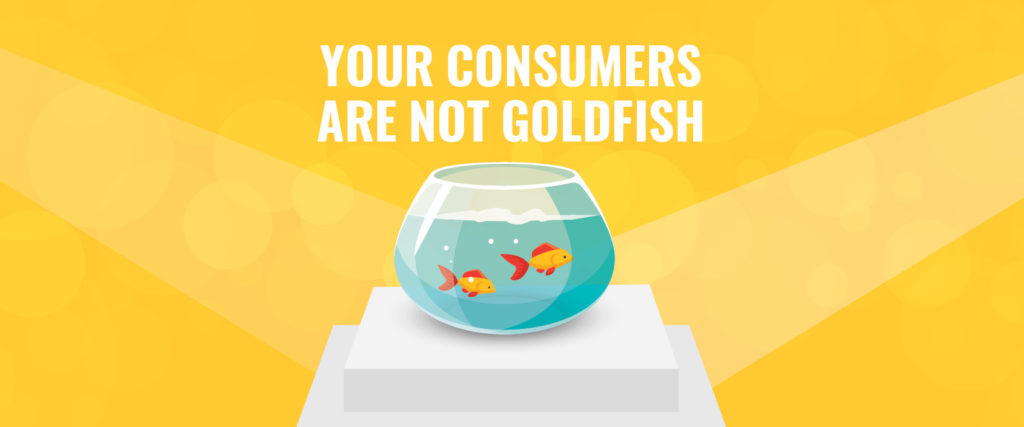A few years ago, Microsoft came out with a study that unfavorably compared a human’s attention span to that of a goldfish. According to the study, the goldfish’s nine-second attention span outlasted the human’s by a full second. The study, designed to help marketers understand changes in how content and information is consumed, was picked up by respected media everywhere. And really, why wouldn’t it be? It came from a large, respectable company. I was packaged up in an intriguing man vs. fish headline. And, it had direct implications for marketers promoting their products and services to consumers.
Since then, thanks to skeptics with better-than-average attention spans, the research has been largely disproved. Much of the faulty information came from sources referenced outside of the actual research conducted by Microsoft. But that didn’t stop the information from making it into marketing presentations everywhere, altering marketing strategies everywhere. We now have one-second radio spots, six-second videos, digital billboards that change ads displayed every six seconds and infographics instead of articles.
How did we get to a point in the marketing world where holding the audience’s attention for LESS time was the solution to NOT gaining their attention at all?
There is no doubt that there are more “things” than ever before vying for consumers’ attention. Podcasts, streaming video, new social media apps, video content, virtual reality and video games are all competing for our attention. But maybe it’s not the length of the content, but rather the quality, that is impacting the amount of time people spend with it. If people’s attention spans were shrinking so drastically, you’d expect people to be buying fewer books, spending less time listening to audio content and not able to sit for hours at a time watching t.v. episodes. That’s just not the case:
- According to publishers weekly, print book sales are up more than 10% between 2013 and 2017.
- In the past four years, the number of people who listen to podcasts has increased from 12% to 24%. The average podcast episode length is almost 40 minutes.
- According to Deloitte’s Digital Democracy survey, 73 percent of U.S. consumers (and 90 percent of the younger part of that audience) have binge watched video content. Millennials and the younger Generation Z audience binge watch weekly, watching an average of 6 episodes (5 hours of content) in a single sitting.
In the rush by marketers to get their share of attention by pushing out an endless supply of content, there is now a tremendous amount of mediocre content for people to filter through. Consumers have gotten good at sorting out the good from the bad. Bad content? Move on. Good content? People will spend the time.
Want a simple example? Take the typical training video — usually one of the most boring, lifeless communication tools in the company arsenal. But critical information that needs to be communicated. Maybe it’s sales training? Maybe it’s safety training. Picture a post-lunch powerpoint presentation to a classroom of sleepy employees? Slide after slide of best practices and processes. Total snoozer, right? If you’re lucky, maybe it’s a video with a spokesperson who can’t watch you nod off.
What if something as simple as safety training, critically important to the safety of a company’s employees, was done in a form of a Hollywood movie instead of a dull powerpoint presentation — with an introductory trailer that looked like this? Would it cost more than a powerpoint? Yes. Would it have more impact? Be more memorable? Be talked about more by those who saw it? Yes.
Marketers today are competing with more content and more channels for that content to be delivered than ever before. If you want to gain people’s attention in this attention-seeking marketing world, you’ll be more effective by developing content that is interesting, compelling and plays to people’s needs and emotions than by developing content that plays to shorter attention spans that people have to invest in mediocre content. Are you up for the challenge?
LF Newsletter Alert
Want Lessing-Flynn to rock the socks off your inbox with insights and more?




